Our verdict
- Top pick in best Skechers walking shoes
Pros
- Tons of cushioning
- Super plush ride
- Very supportive for flat feet
- Really wide platform
- Highly breathable
- Outstandingly durable
- Comfortable in-shoe feel
- Adds height to wearers
- Excellent grip on wet and dry surface
Cons
- Heavier than average
- Not so flexible
Audience verdict
- Top 30% in city walking shoes
Comparison
The most similar walking shoes compared
+ + Add a shoe | |||||
|---|---|---|---|---|---|
| Audience score | 90 Great! | 90 Great! | 91 Great! | 86 Good! | |
| Price | $115 | $160 | $110 | $130 | |
| Arch support | Stability | Neutral | Neutral | Stability | |
| Shock absorption | High | High | High | Moderate | |
| Energy return | Moderate | High | High | Moderate | |
| Traction | High | High | Moderate | Moderate | |
| Condition | Flat feetOverpronation | - | - | Diabetic (A5500)Flat feetOverpronation | |
| Orthotic friendly | ✓ | ✓ | ✓ | ✓ | |
| Weight lab Weight brand | 11 oz / 312g | 9.4 oz / 266g | 10.8 oz / 306g 10.8 oz / 305g | 13.7 oz / 388g 14.5 oz / 411g | |
| Lightweight | ✗ | ✓ | ✗ | ✗ | |
| Breathability | Breathable | Warm | Moderate | Warm | |
| Use | For standing all dayCityDisneyEuropeFor nursesRecovery | For standing all dayTravelCityDisneyEuropeFor nurses | CityDisneyEurope | WorkEuropeFor nurses | |
| Size | True to size | True to size | True to size | True to size | |
| Midsole softness | Soft | Balanced | Soft | Balanced | |
| Difference in midsole softness in cold | Normal | Normal | Small | Small | |
| Insole thickness | Average | Very thin | Thin | Average | |
| Removable insole | ✓ | ✓ | ✓ | ✓ | |
| Stiffness | Moderate | Moderate | Moderate | Stiff | |
| Torsional rigidity | Stiff | Stiff | Stiff | Stiff | |
| Heel counter stiffness | Flexible | Flexible | Flexible | Moderate | |
| Heel tab | Finger loop | None | None | None | |
| Drop lab | 8.6 mm | 8.7 mm | 9.3 mm | 12.2 mm | |
| Heel stack lab | 36.0 mm | 35.5 mm | 34.9 mm | 35.7 mm | |
| Forefoot | 27.4 mm | 26.8 mm | 25.6 mm | 23.5 mm | |
| Width / fit | Narrow | Medium | Narrow | Narrow | |
| Toebox width | Medium | Medium | Medium | Narrow | |
| Closure | Laces | Bungee laces | Laces | Laces | |
| Toebox durability | Decent | Good | Good | Good | |
| Heel padding durability | Good | Bad | Decent | Good | |
| Outsole durability | Good | Good | Decent | Good | |
| Midsole width - forefoot | Average | Wide | Average | Average | |
| Midsole width - heel | Wide | Wide | Wide | Average | |
| Outsole hardness | Average | Average | Very hard | Average | |
| Outsole thickness | Average | Average | Average | Thick | |
| Tongue padding | Average | Average | Thick | Thick | |
| Tongue: gusset type | None | Both sides (semi) | Bootie | None | |
| Slip-resistant | ✗ | ✗ | ✗ | ✓ | |
| Material | Mesh | Mesh | Mesh | Leather | |
| Ranking | #14 Top 39% | #16 Top 45% | #9 Top 25% | #29 Bottom 19% | |
| Popularity | #14 Top 39% | #5 Top 14% | #7 Top 20% | #4 Top 12% |
Who should buy
We highly recommend the Skechers Max Cushioning Arch Fit if you are after the following:
- A shoe that stays comfortable all-day
- A stability shoe to support your flat feet
- A sporty-looking walking shoe
- A heavily cushioned shoe that would boost your height
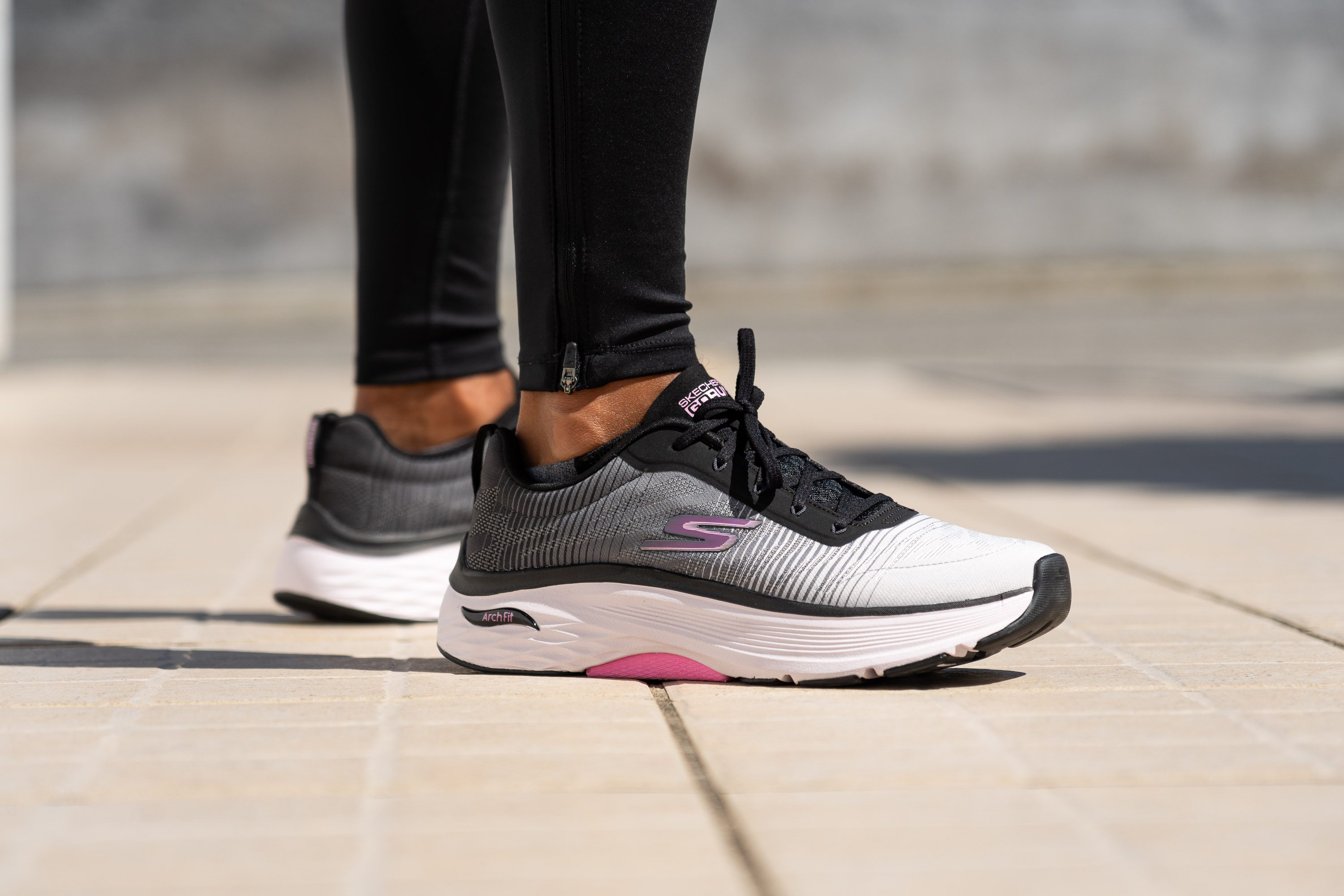
Who should NOT buy
If you don't have flat feet and don't experience excessive inward rolling of your ankles, then you may not need as much arch support. Instead, you may prefer a shoe that will not burden your feet with its weight, like the Skechers GOWalk Joy.
And if you want a super flexible pair, the Skechers Summits might just be what you're looking for!
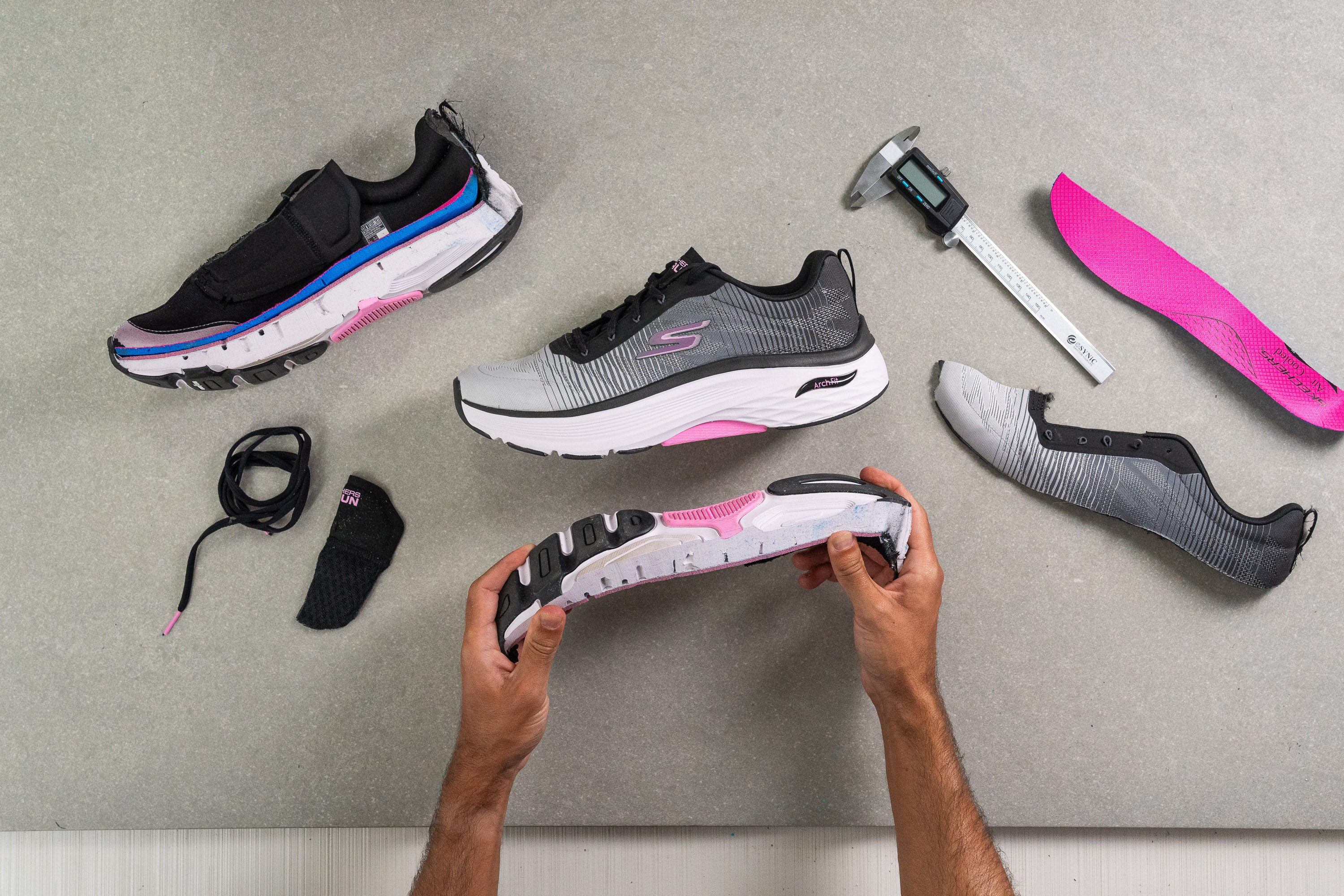
Cushioning
Shock absorption
There is a very good reason why this Skechers shoe says 'Max Cushioning' in its name.
With a whopping shock absorption measurement of 139 SA, it proved to be one of the most cushioned walking shoes we've ever tested! It is mind-blowingly comfortable, even for spending an entire day on your feet!

| Max Cushioning Arch Fit | 139 SA |
| Average | 111 SA |
Energy return
But please note that the ride of this shoe is not particularly bouncy. Measuring its energy return at only 45.7%, this Skechers shoe proved to have a low-rebound yet stable and supportive platform.
| Max Cushioning Arch Fit | 45.7% |
| Average | 51.1% |
Heel stack
Using a caliper to measure its stack height, we got 36.0 mm in the heel! This is 4.7 taller than average, which means that your feet will enjoy a highly cushioned ride. Time to walk on clouds!
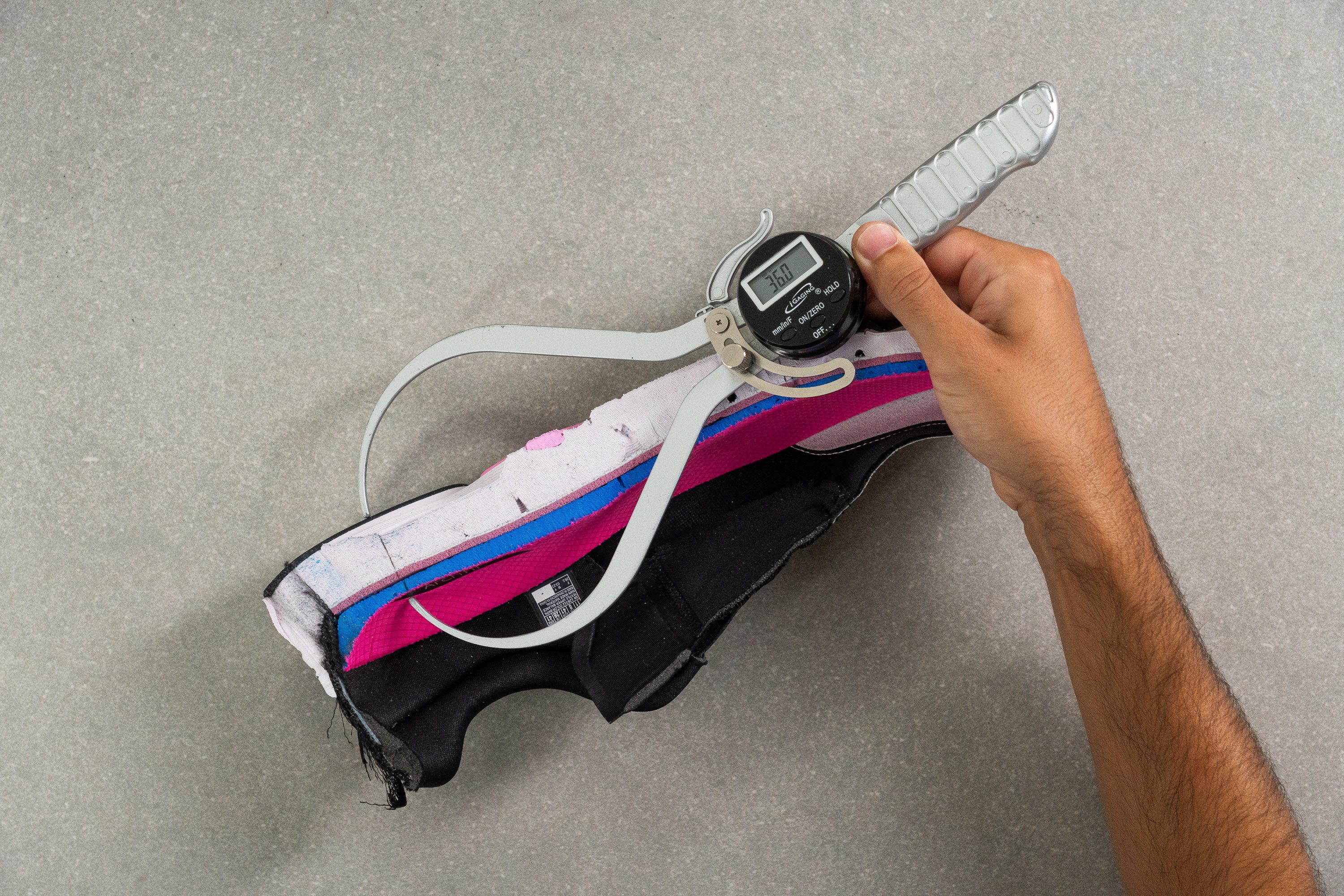
| Max Cushioning Arch Fit | 36.0 mm |
| Average | 32.3 mm |
Forefoot stack
Following the heel's lead, the forefoot also has a good amount of cushioning. When we measured the forefoot of this pair, we found its stack height to be 27.4 mm!
This left us in awe, as it's even more cushioning than some walking shoes have in their heels! So there's not a single spot where the Skechers Max Cushioning Arch Fit lack support.

| Max Cushioning Arch Fit | 27.4 mm |
| Average | 21.9 mm |
Drop
Comparing the difference between the stack heights previously mentioned, we got a heel-to-toe drop of 8.6 mm.
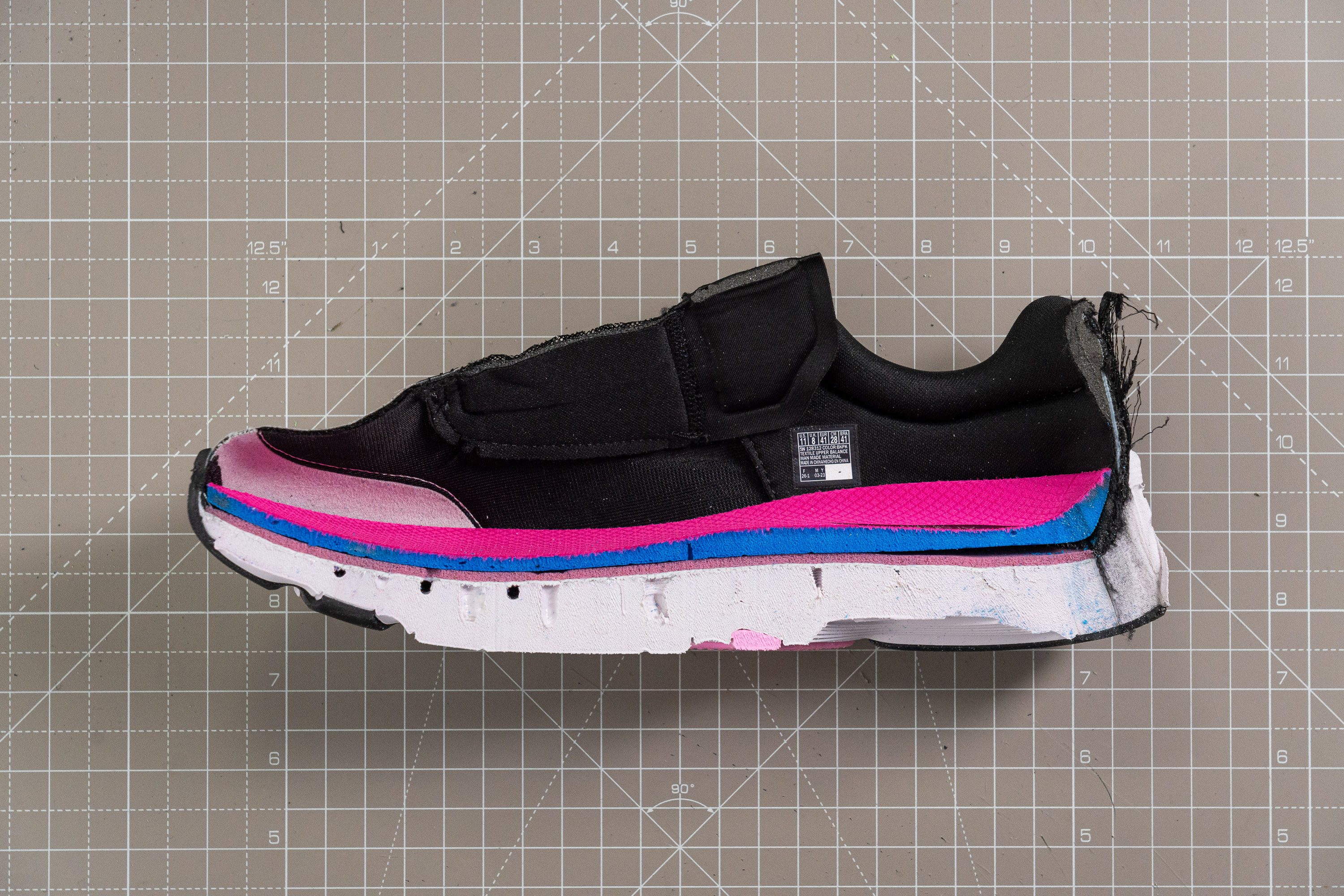
This is 1.7 mm lower than average! But it was still high enough to keep our heels protected from impact when taking a step.
| Max Cushioning Arch Fit | 8.6 mm |
| Average | 10.4 mm |
Midsole softness
Using our durometer, we measured the shoe's foam at 17.0 HA. That number might not seem like much, but hear us out, this means that it's 50% softer than average! Unbelievable!
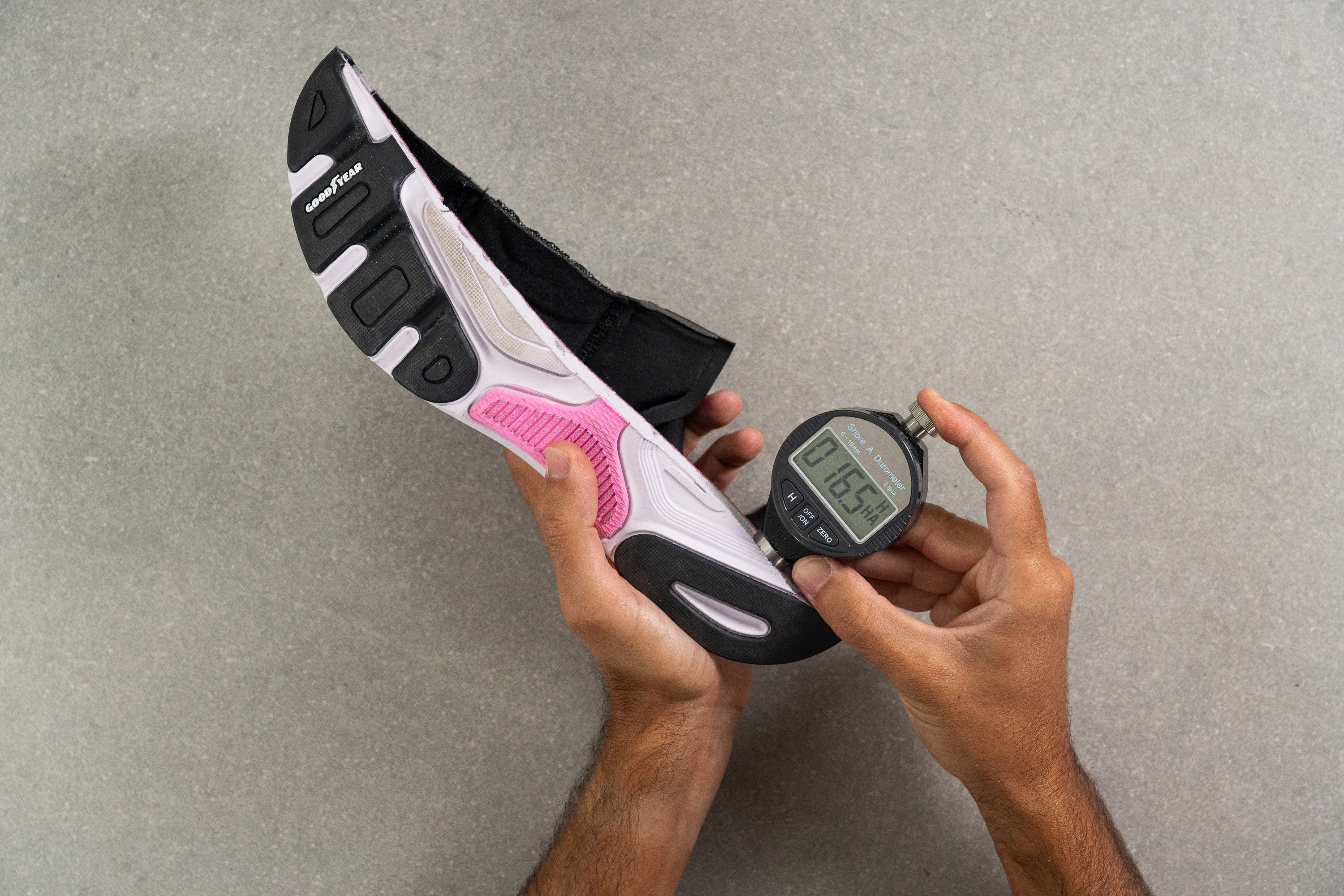
Saying that it feels like you're walking on marshmallows is the closer we can get to describing the amount of plush these shoes have! This is all thanks to Skechers' Max cushioning and the Ultra Go technology.
local_video src="https://cdn.runrepeat.com/storage/gallery/product_content/37629/skechers-max-cushioning-arch-fit-midsole-softness-in-the-forefoot.mp4"]
| Max Cushioning Arch Fit | 17.0 HA |
| Average | 26.4 HA |
Size and fit
Size
Skechers Max Cushioning Arch Fit fits true to size (45 votes).
Toebox width - widest part
We measured the widest part of the Skechers Max Cushioning Arch Fit's toebox at 99.2 mm, which is pretty close to the average of our tested walking shoes.
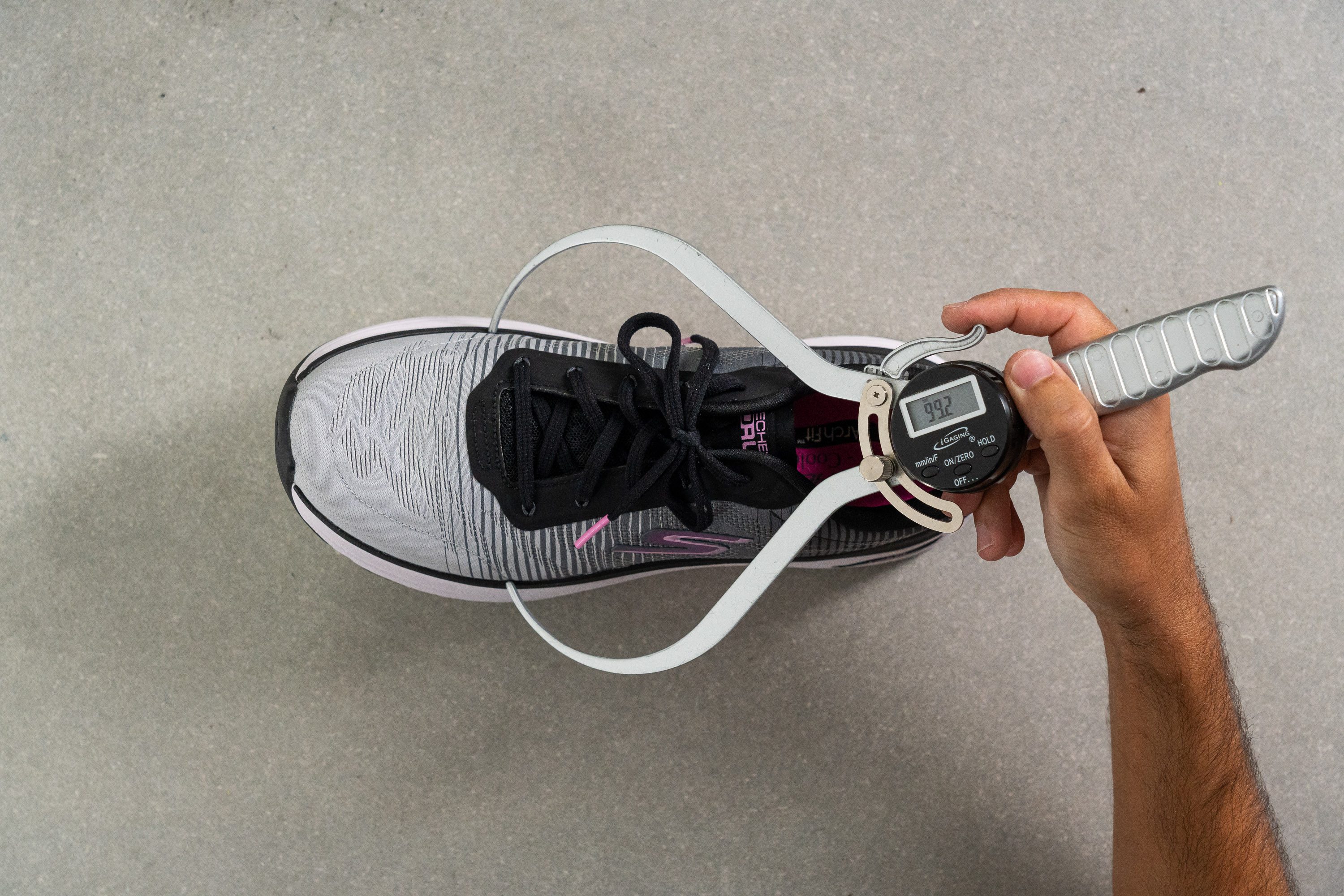
This test follows an older methodology, which is why you don't see recently tested shoes in the chart. Results from different methodologies can not be compared.
| Max Cushioning Arch Fit | 99.2 mm |
| Average | 99.2 mm |
Toebox width - big toe
Then, we checked the width of this shoe on the big toe. With its 76.4 mm, it's quite close to the average, so we can't really say it's pointy.
Actually, we can definitely recommend it to people with medium-wide feet, as it's available in Wide and Extra-Wide for those who need more space for their toes. It definitely earns some extra points for that!
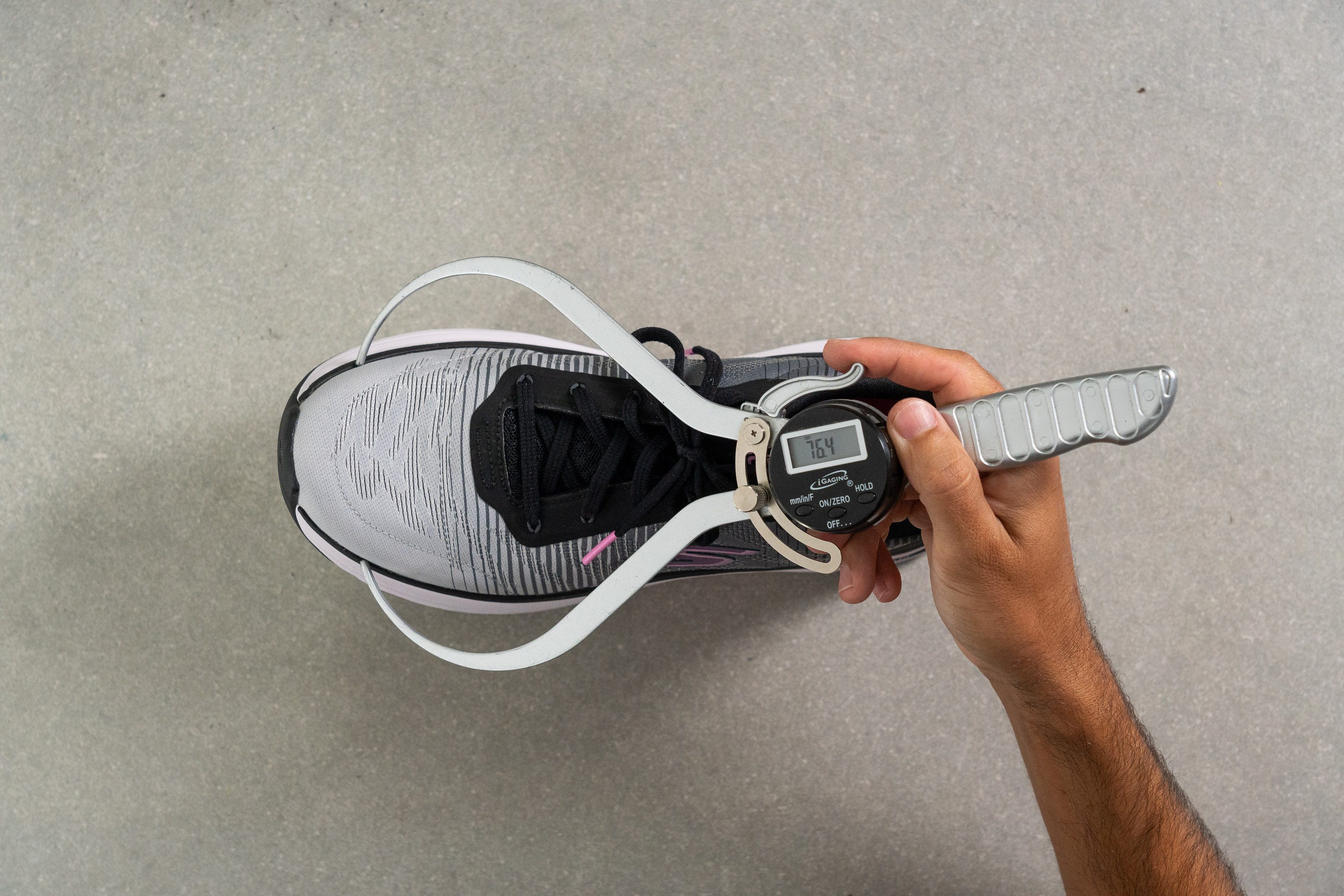
This test follows an older methodology, which is why you don't see recently tested shoes in the chart. Results from different methodologies can not be compared.
| Max Cushioning Arch Fit | 76.4 mm |
| Average | 78.6 mm |
Traction / Grip
Traction test
The hype around Goodyear rubber is real! Used in the outsole of the Skechers Max Cushioning Arch Fit, it showed fantastic gripping capacity on urban surfaces.
Our grip testing machine recorded an above-average coefficient of friction (0.52) which means that this blend has a great bite on both dry and wet concrete.
| Max Cushioning Arch Fit | 0.52 |
| Average | 0.46 |
Outsole design
Considering the Goodyear rubber's excellent traction, this Skechers shoe doesn't need a full-length outsole to keep you surefooted. With rubber patches only in the heel and forefoot, it leaves space for large flex grooves and helps to keep the shoe's weight down.
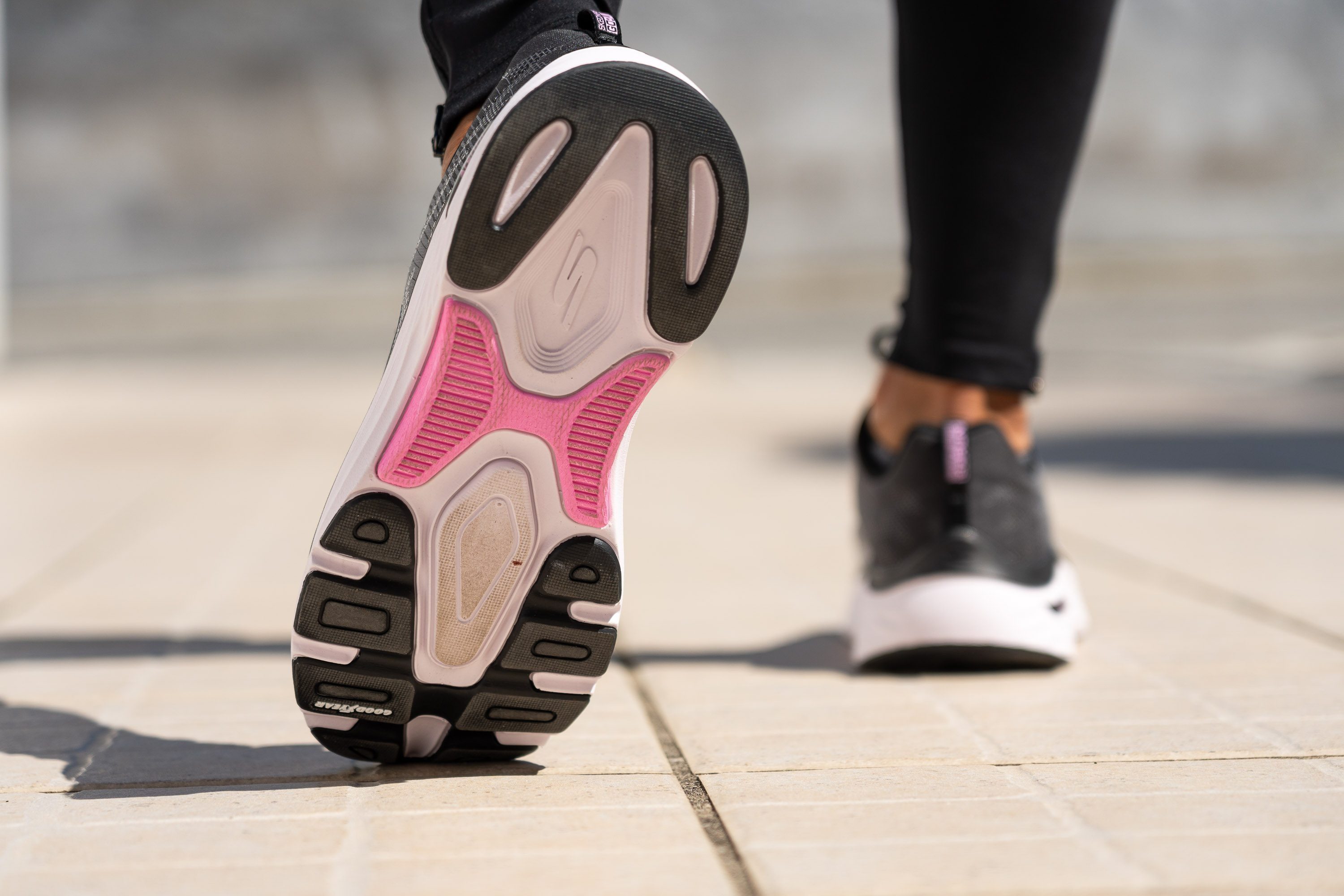
Flexibility / Stiffness
Having performed a stiffness test on a specialized shoe flexing tester, we found that it took 15.8N to bend this shoe to a 30-degree angle. That makes it harder to bend compared to a typical Skechers shoe or an average walking shoe for that matter.
But we weren't really surprised at this because this Skechers shoe is stability-oriented and compromises some freedom of movement to keep the foot very well supported.

| Max Cushioning Arch Fit | 15.8N |
| Average | 13.9N |
Weight
As we expected, all this durability comes with a price. Weighing the Skechers Max Cushioning Arch Fit on a scale, we got 11.0 oz (312.0g) in a women's US size 11. It is about 2 oz heavier than average, so forget about walking feeling like you've got no shoes on!
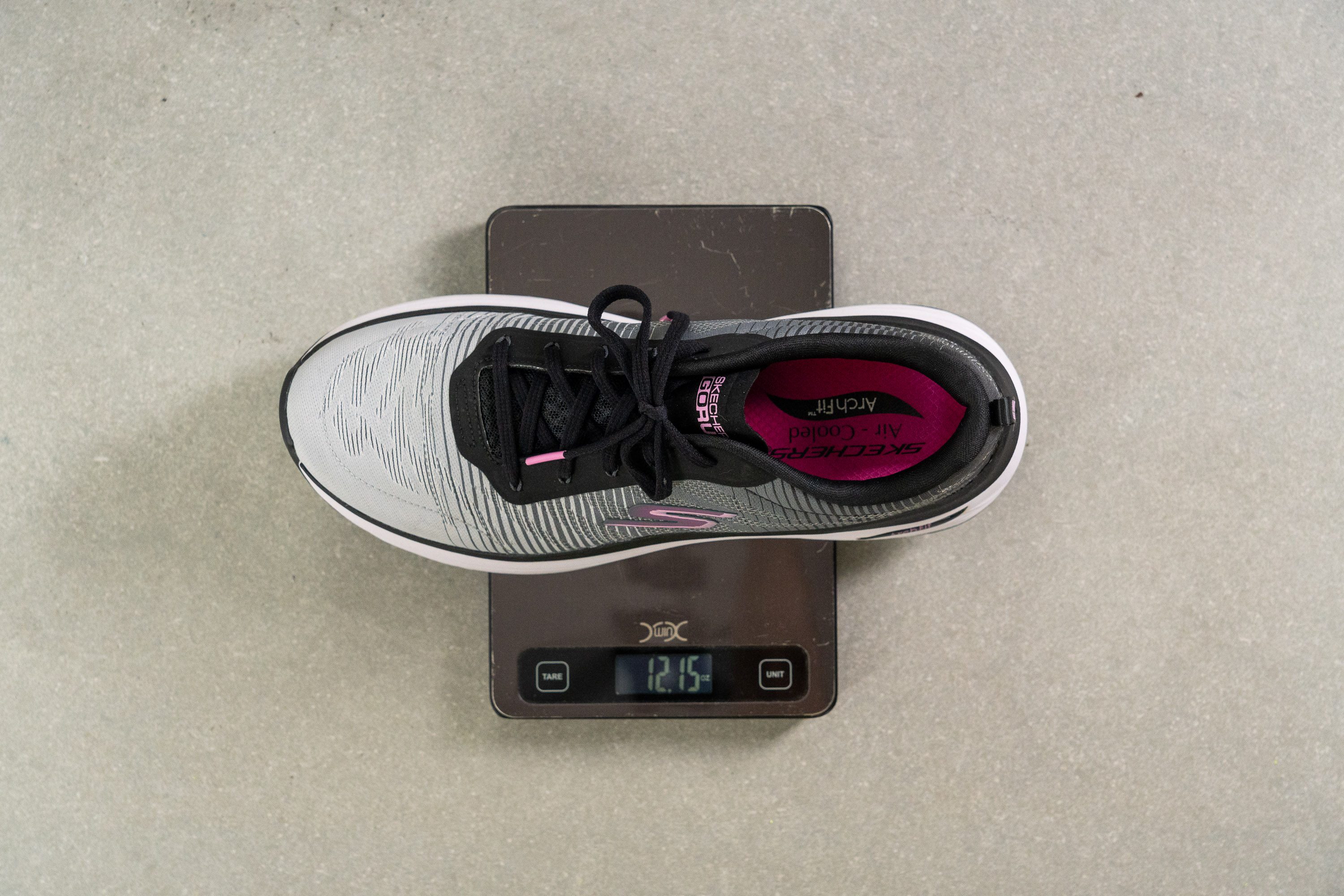
| Max Cushioning Arch Fit | 11.0 oz (312g) |
| Average | 10.2 oz (288g) |
Breathability
We decided to wear this shoe on a warm summer day... and boy were we right! So when the Skechers Max Cushioning Arch Fit got an incredibly high score of 4 out of 5 on our breathability test, we weren't even that surprised.
What we did was pump smoke through the upper of the shoe to check how much of it came through the material. And this mesh-covered pair did amazing!
For reference, let's have a look at the Skechers GOWalk Joy (on the right), which scored a 2/5 on this same test. We can see how big the difference is!
Its mesh material is the one to thank for this!
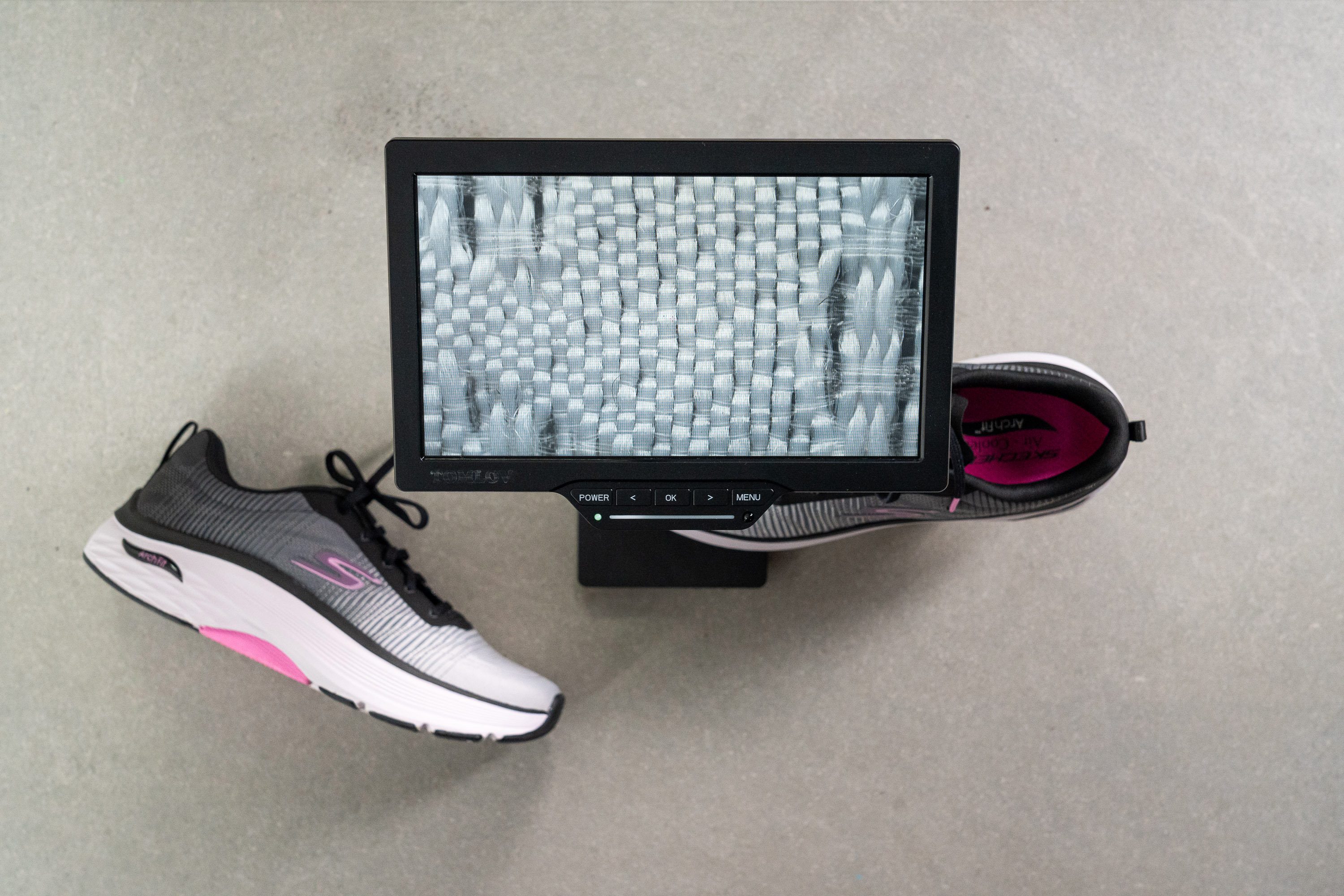
Looking at the upper through our microscope, we could see the woven fabric is thin and has small gaps which definitely help the air come in and out.
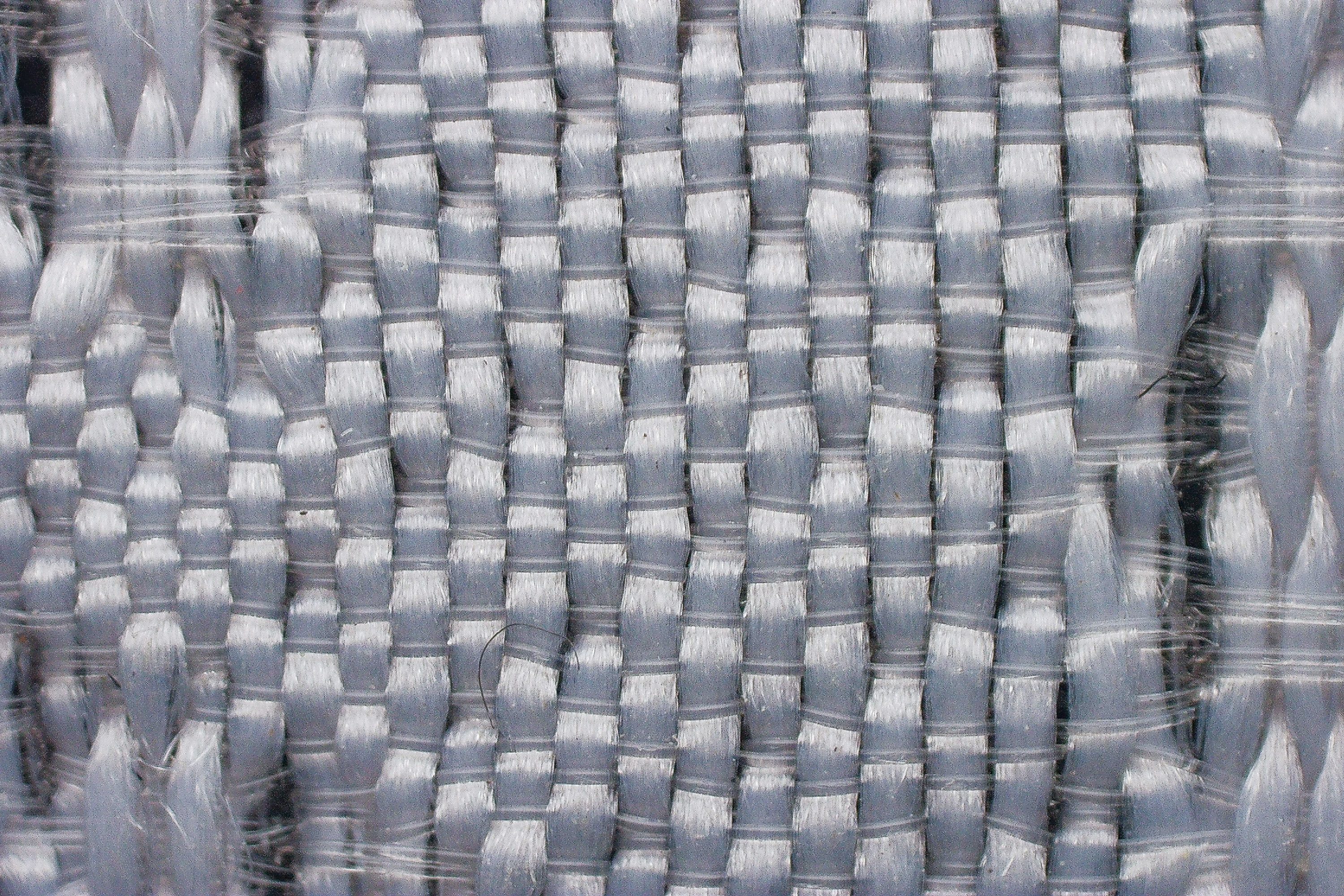
These gaps also light up when we put the shoe's upper against the light in our transparency test below.
| Max Cushioning Arch Fit | 4 |
| Average | 2.9 |
Stability
Lateral stability test
If you see "Arch Fit" written on a Skechers shoe... get ready for tons of arch support!
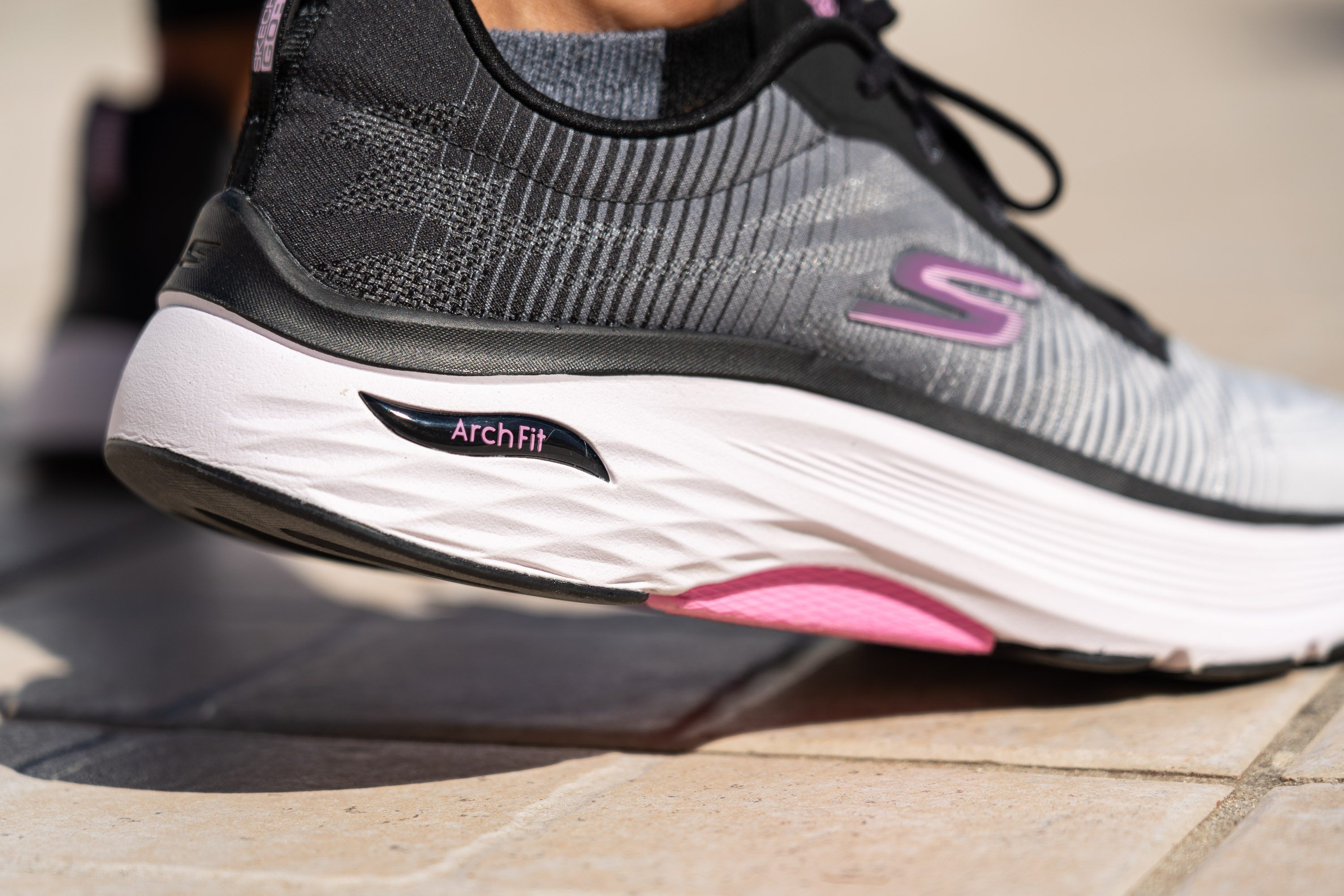
Even for our neutral feet we felt that it was highly supportive. So, flat-footed pals, this is your lucky day!
Torsional rigidity
Given that it's built around support, the Skechers Max Cushioning Arch Fit is not as flexible as many other walking shoes. In fact, it scored a 4/5 on our twisting test!
For comparison, a popular neutral Skechers shoe like the GoWalk 6 scored only 1/5! Super-duper flexible!
This means that this pair is way more rigid than what's normal in its category. Great news for people who are looking for stability in their new shoes!
| Max Cushioning Arch Fit | 4 |
| Average | 2.9 |
Heel counter stiffness
Unlike most stability shoes, the back of the Skechers Max Cushioning Arch Fit was pretty pliable.
Rating its stiffness with a 2 out of 5, which is literally just 1 point away from the most flexible measurement, we found that the heel counter is quite comfortable and will definitely be gentle with your ankles.
| Max Cushioning Arch Fit | 2 |
| Average | 2.4 |
Midsole width - forefoot
The amazingly wide landing surface of this pair improves its stability. Measuring the widest part of the sole in the forefoot, we got 116.1 mm, 6% wider than average!
This might not sound like much at the beginning, but what if we told you that there are less than a dozen walking shoes that we can think of that are this wide? Exactly!
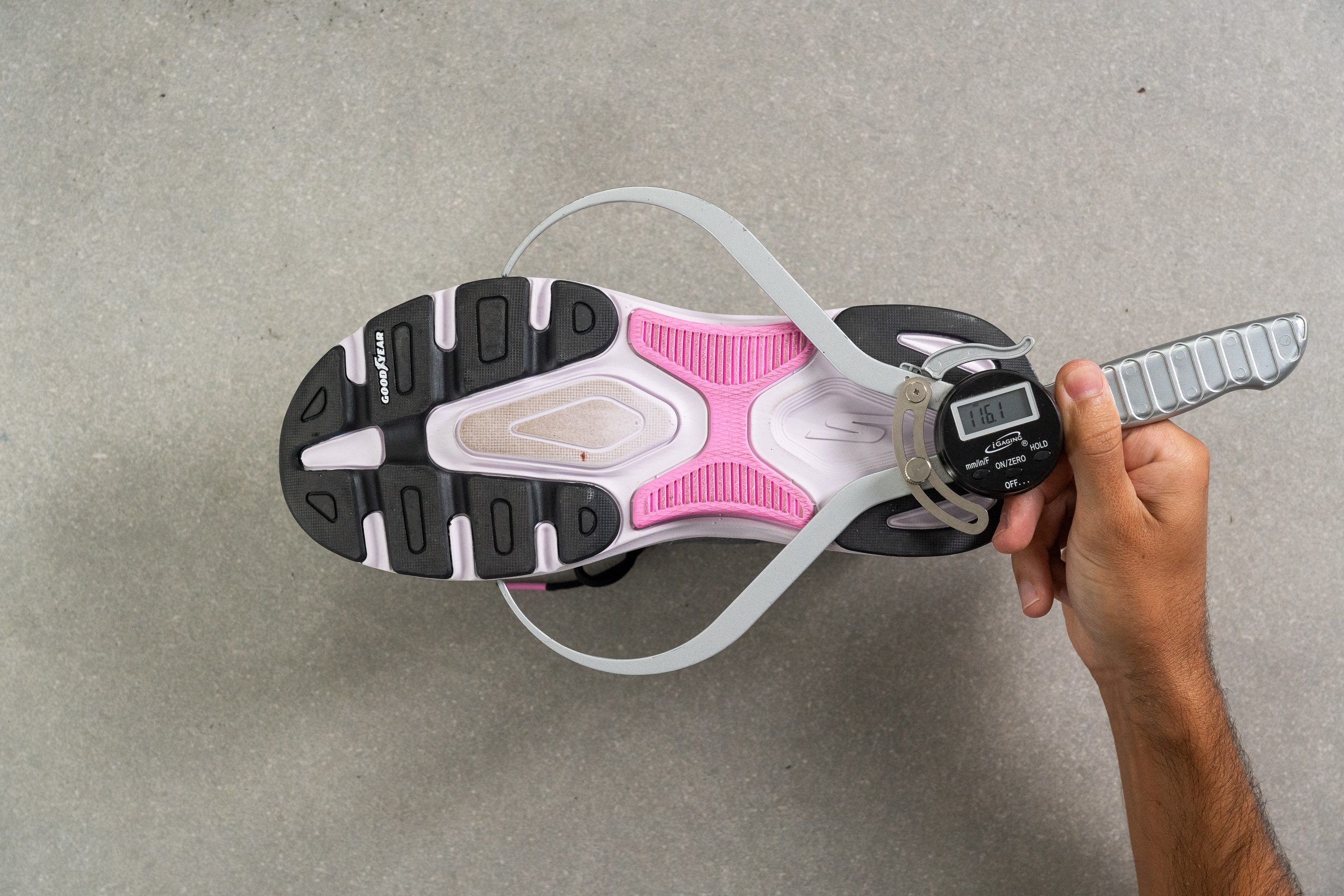
| Max Cushioning Arch Fit | 116.1 mm |
| Average | 112.0 mm |
Midsole width - heel
We also measured the widest part of the heel, and our caliper showed an impressive reading of 96.9 mm. It's way wider than average, and having a wider area to land is always good to feel surefooted!

| Max Cushioning Arch Fit | 96.9 mm |
| Average | 90.3 mm |
Durability
Toebox durability
Following the previous results in our breathability test, we did not think the Skechers Max Cushioning Arch Fit would be the toughest soldier out there, but... we were totally wrong!
After 4 seconds of drilling its toebox with a Dremel, the tool only damaged the top layer of the upper. We gave it a 3 out of 5, and for a pair with such a level of breathability, this is a really good score!
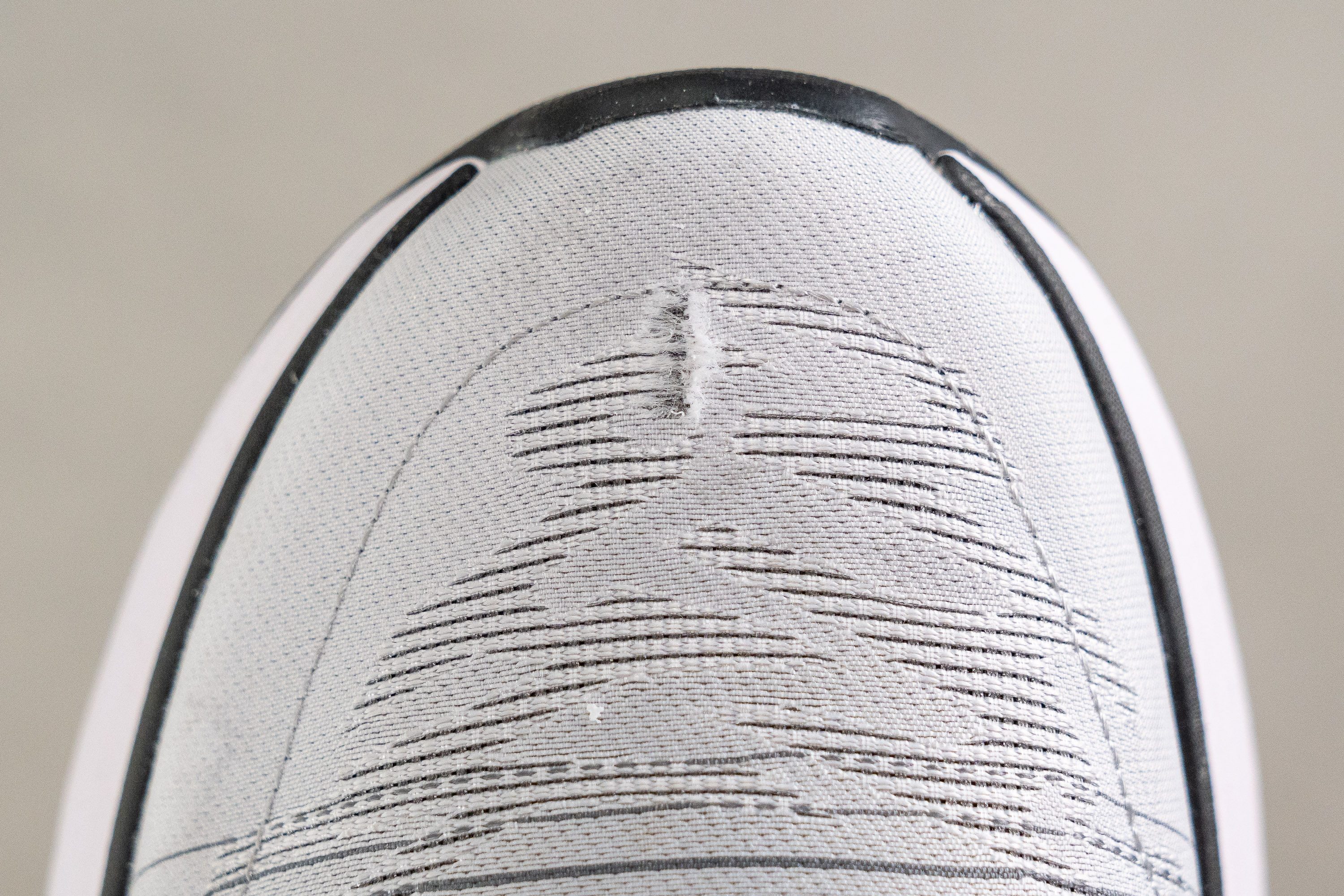
If we compare this shoe's durability with the On Cloudrift's, we can easily see that the Dremel damaged the second pair way more. So we gave it a 1 out of 5 in this same test.
Which is crazy, by the way! The Max Cushioning Arch Fit is not only more durable, but also cheaper: the On Cloudrift costs $35 more!
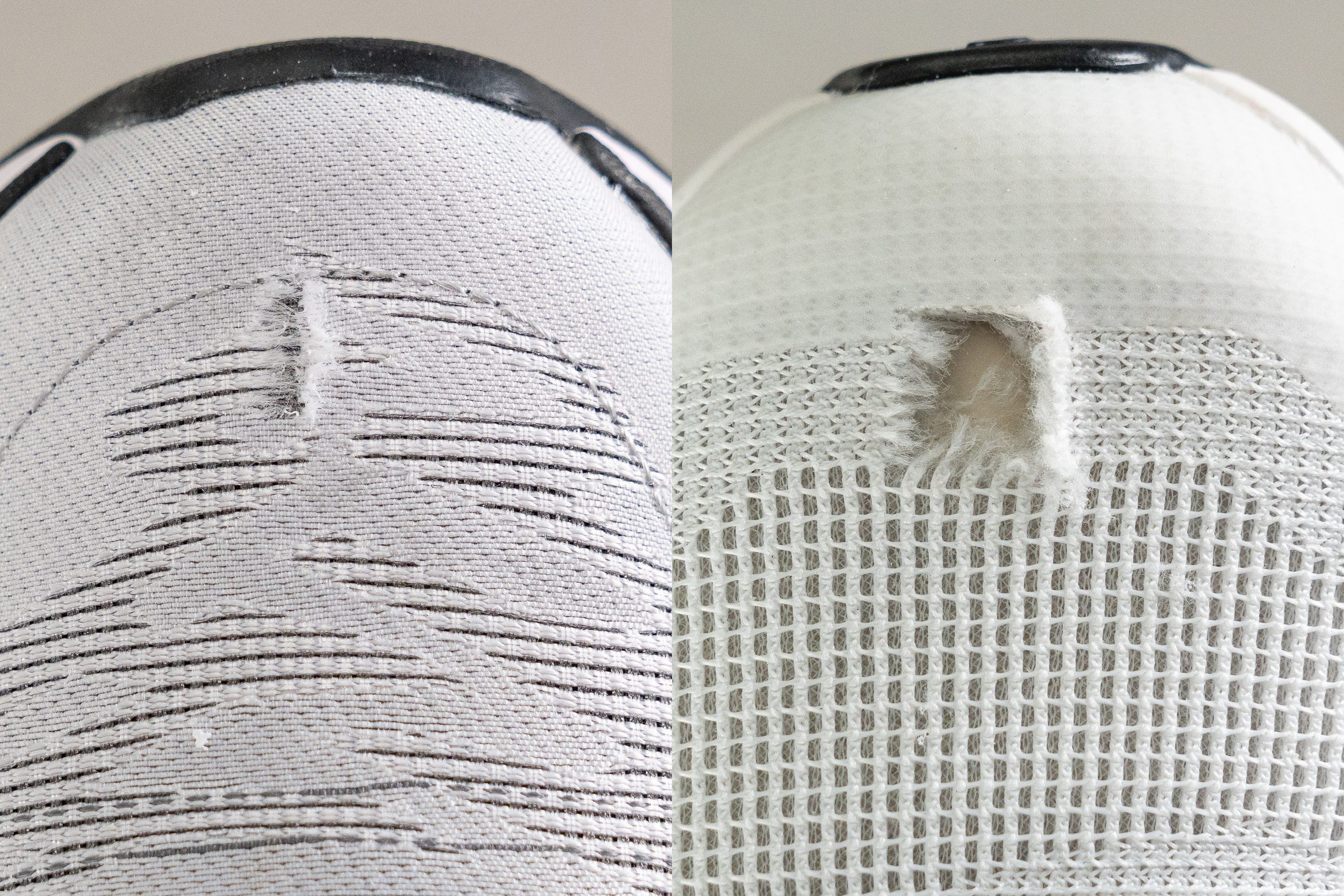
| Max Cushioning Arch Fit | 3 |
| Average | 3.2 |
Heel padding durability
But check this out... the heel pad did even better! We used our Dremel to test out its durability level, and this pair showed way less damage than usual.
Even though it's a pretty sensitive spot for walking shoes, the Skechers Max Cushioning Arch Fit stood up for the test wonderfully, earning a well-deserved 4/5!
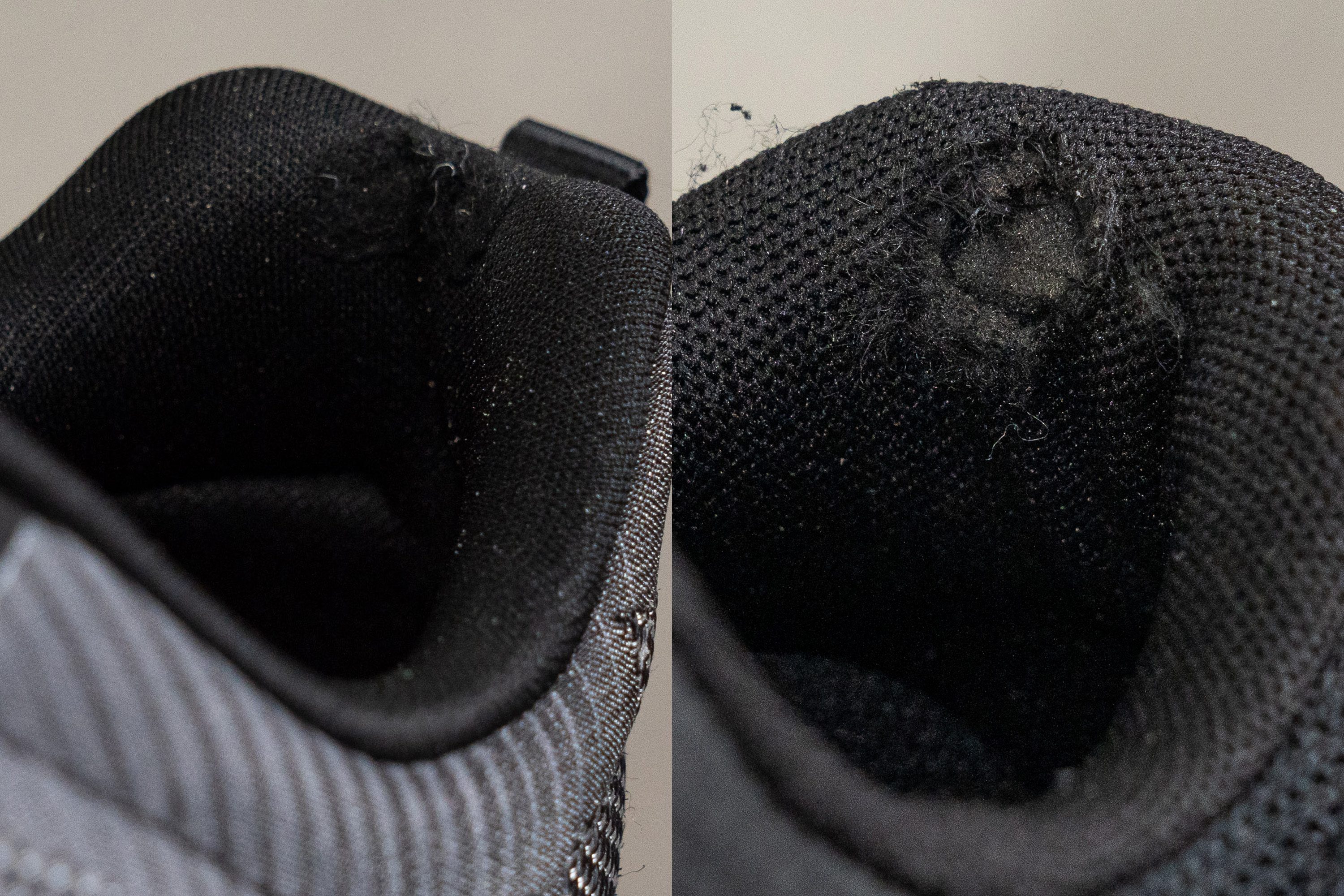
| Max Cushioning Arch Fit | 4 |
| Average | 2.3 |
Outsole hardness
If we look at the bottom of the shoe, we can see that it doesn't have a full-length rubber outsole. Usually, this would make you go: "Ah, it must not be that durable then". Well, with this jack-in-the-box pair, you might as well think again!
The high-abrasion areas are covered and protected, and let us tell you... its sole is so damn hard for a walking shoe!
After measuring its hardness with a durometer, we could finally put our feelings into numbers, as it scored 80.6 HC. This means it is 11 % harder than average!

But we're not done here. Many Skechers models don't even have rubber soles in the first place, only exposed foam! So the Skechers Max Cushioning Arch Fit's sole is wonderfully tougher.
Harder rubbers and better longevity go hand in hand, which is fantastic, but this also implies that the shoe will be heavier.
| Max Cushioning Arch Fit | 80.6 HC |
| Average | 78.0 HC |
Outsole durability
And, apparently, its hardness was enough for the shoe to resist our Dremel's attack! After drilling the material for 22 seconds at a speed of 10K RPM, the damage wasn't even close to what other pairs suffered.
To understand it better, we used a tread gauge to measure the depth of the damage, and it was only 0.2 mm deep! Just by saying that the hiking boots that we've tested got around 1mm of damage should be enough to make clear how impressive this score is!
The Skechers Max Cushioning Arch Fit's insanely durable sole will stand strong even when the cushioning is gone and the upper is torn. It's pretty much invincible!
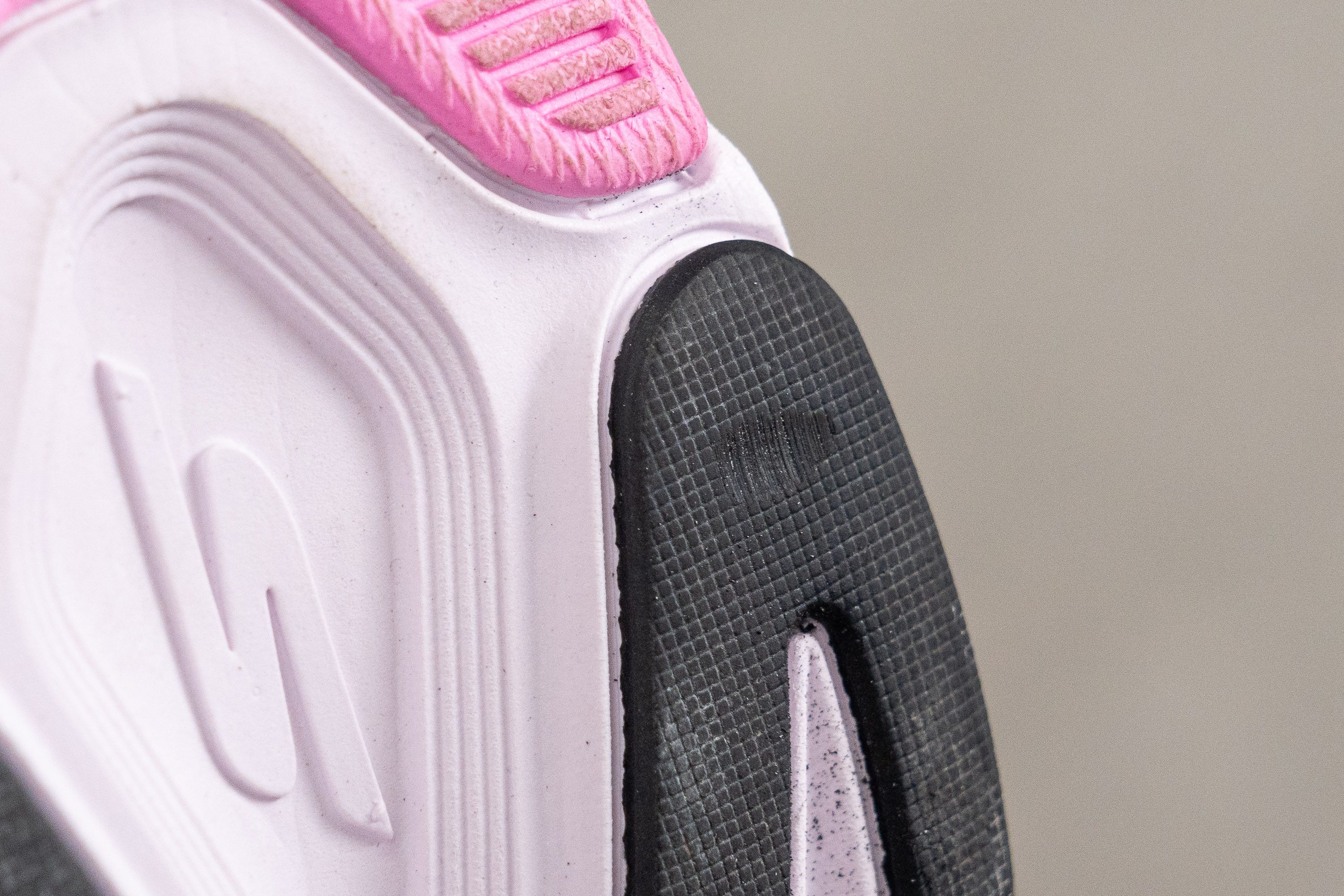
| Max Cushioning Arch Fit | 0.2 mm |
| Average | 1.4 mm |
Outsole thickness
Using a caliper, we measured the outsole thickness at 2.9, which is the same number as the average for this type of shoes.
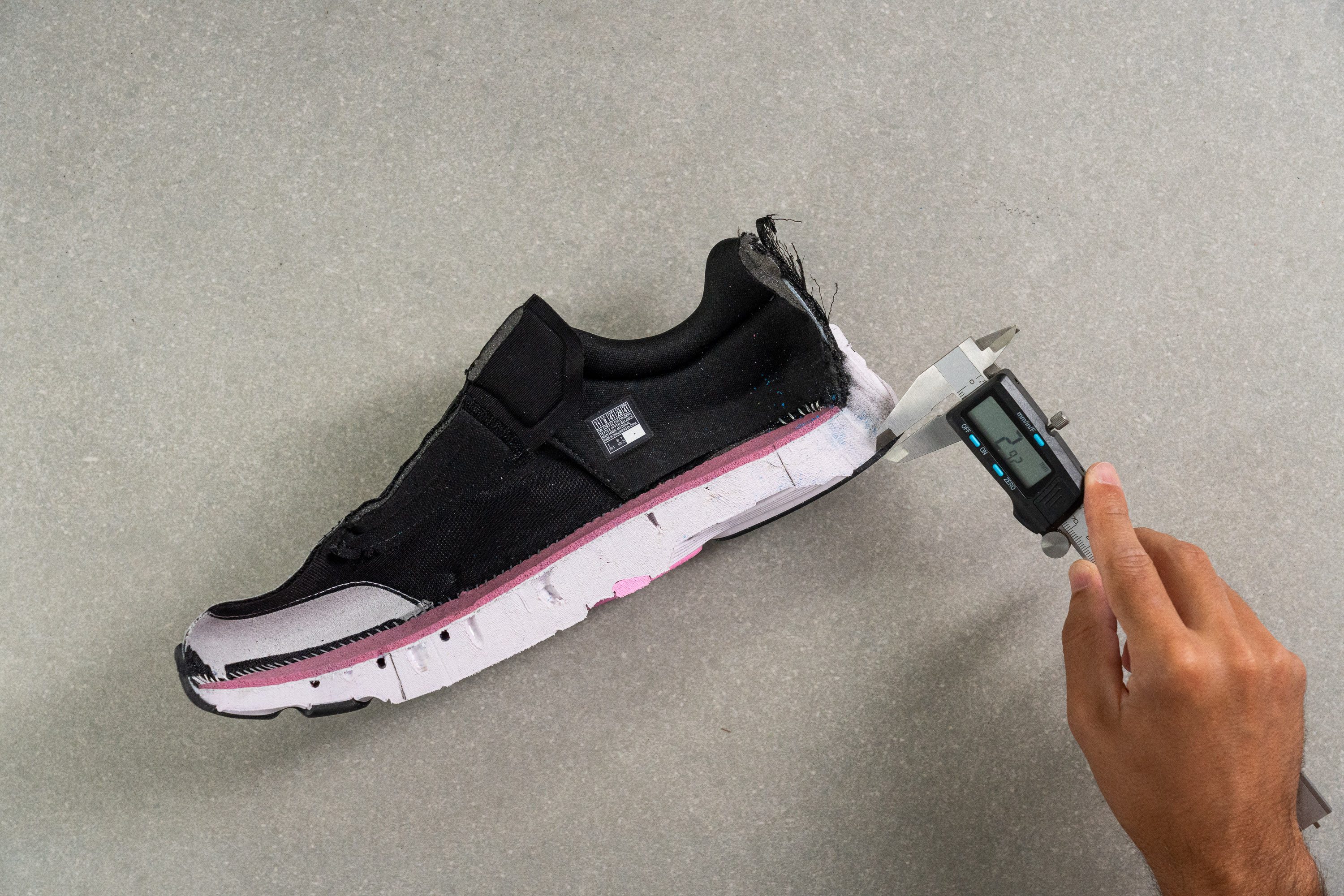
| Max Cushioning Arch Fit | 2.9 mm |
| Average | 3.0 mm |
Misc
Insole thickness
This pair comes with a renowned Ortholite insole, which adds an extra layer of padding, boosting the general comfort levels. We measured its thickness at 5.4 mm, which is pretty standard for a walking shoe.
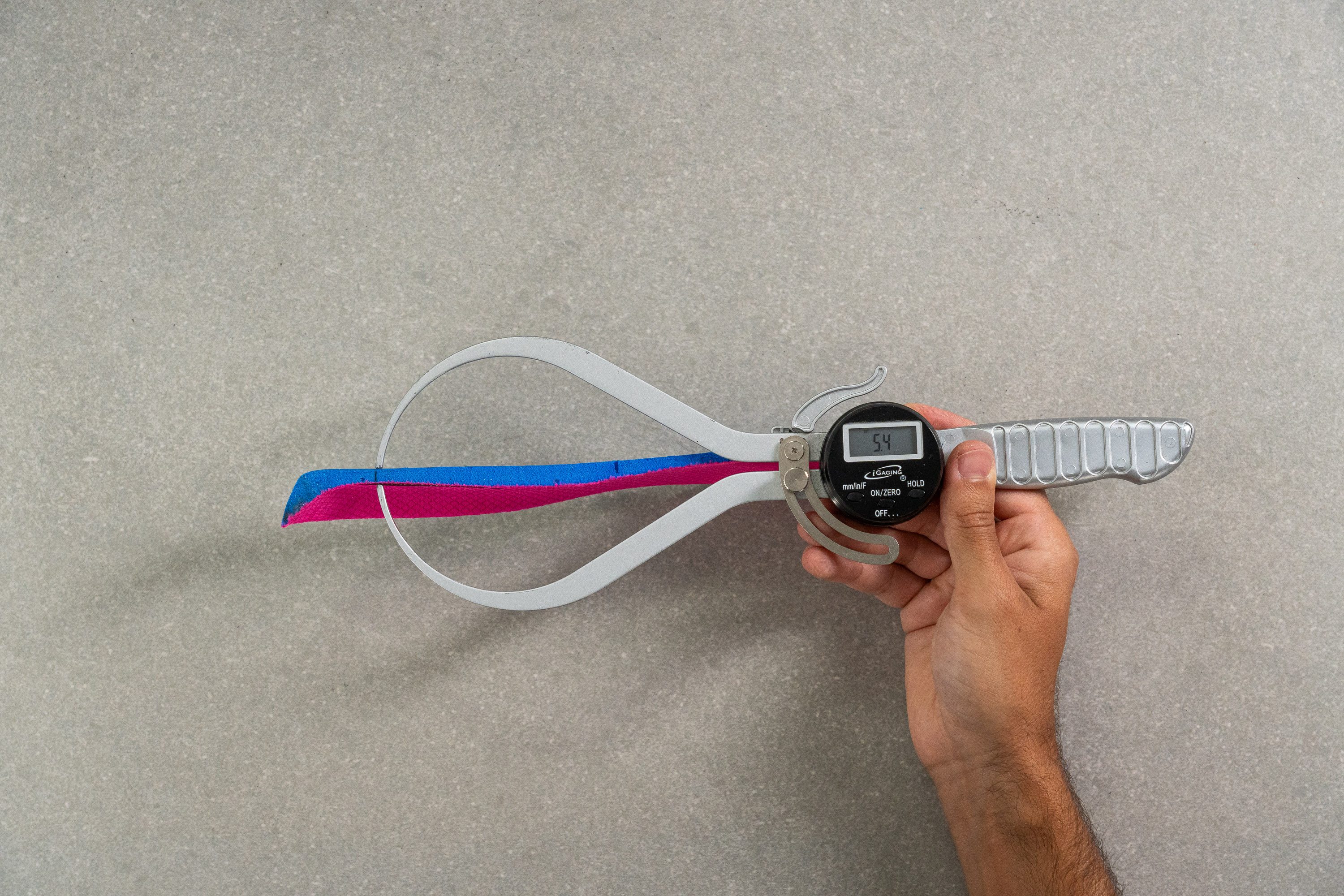
| Max Cushioning Arch Fit | 5.4 mm |
| Average | 5.8 mm |
Removable insole
It comes with a removable insole, which is great news for anyone who wants to wear their own orthotics!
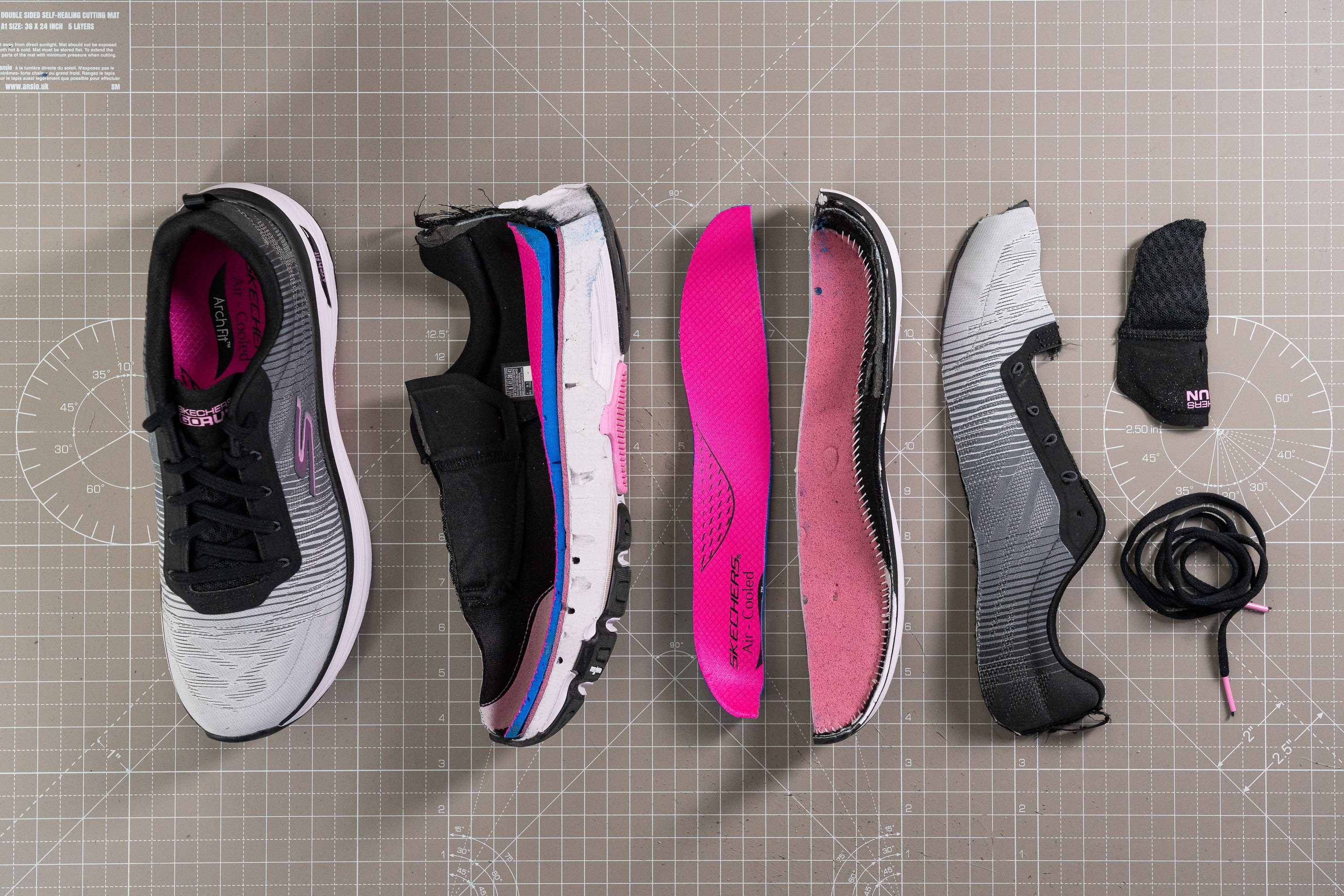
| Max Cushioning Arch Fit | Yes |
Midsole softness in cold (%)
It was pretty cool to find out that the Skechers Max Cushioning Arch Fit won't become a brick when winter comes!
After keeping the shoe in our freezer for 20 minutes and repeating the measurement, our durometer showed 23.4 HA. This means its foam is, once again, 50 % softer than average! Even when it's "frozen!" Another incredible score for this pair.

When we exposed the Skechers Max Cushioning Arch Fit to a low temperature, its midsole became 37.5% firmer, which is quite close to the average!
| Max Cushioning Arch Fit | 38% |
| Average | 30% |
Reflective elements
There are no reflective elements on the Skechers Max Cushioning Arch Fit.

| Max Cushioning Arch Fit | No |
Tongue padding
Measuring its thickness, our caliper showed 4.5 mm, which means it's 13% thicker than the average. You don't need to worry about any hotspots there!

| Max Cushioning Arch Fit | 4.5 mm |
| Average | 5.6 mm |
Tongue: gusset type
As we can see in the picture, there are no gussets on the tongue, and it's not attached to the sides of the upper either.
This might make you think that the tongue is going to be dancing around freely, but not at all! It stayed in place during our whole wear test.
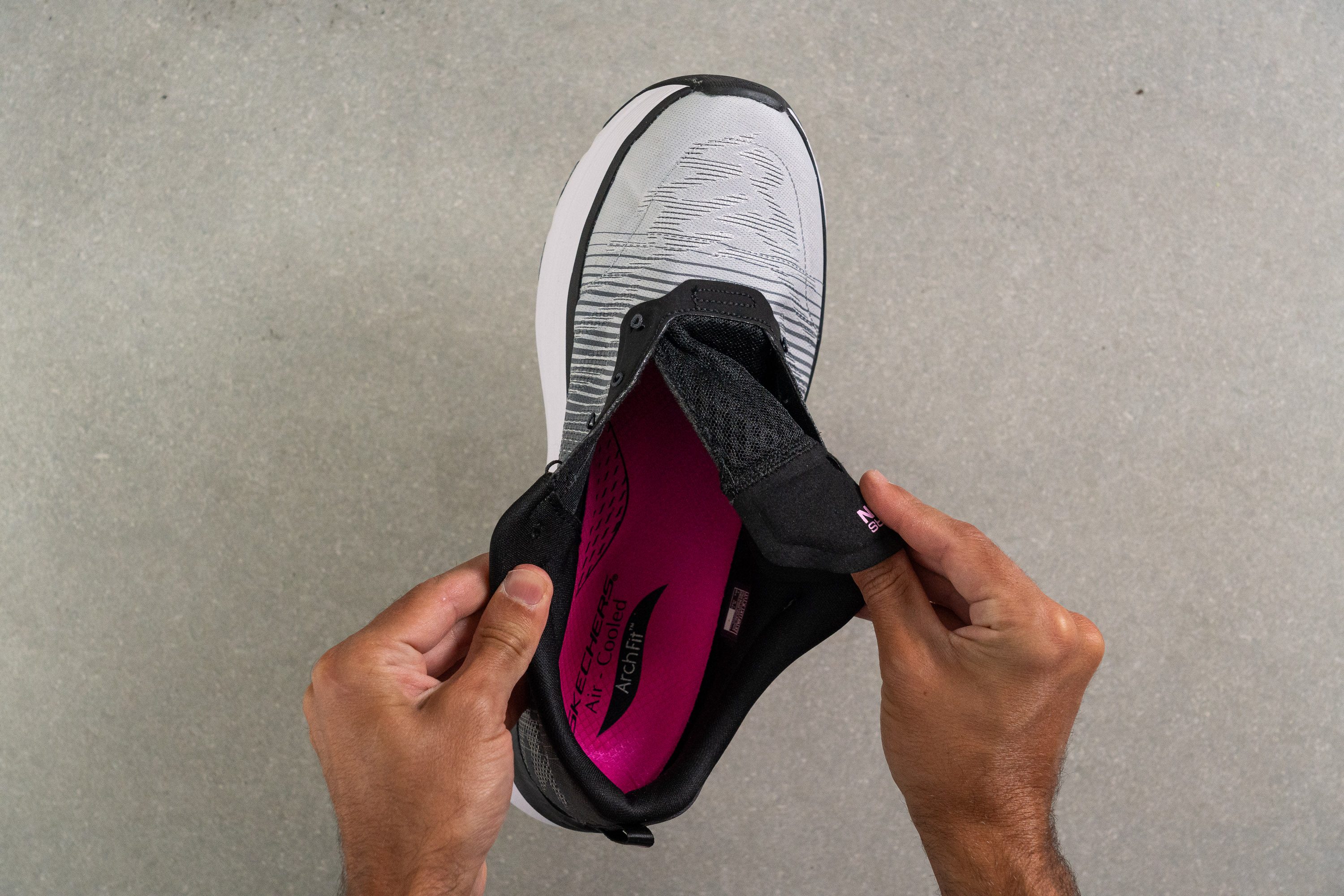
| Max Cushioning Arch Fit | None |
Heel tab
The finger loop that this pair has at the back makes it easier to put on.
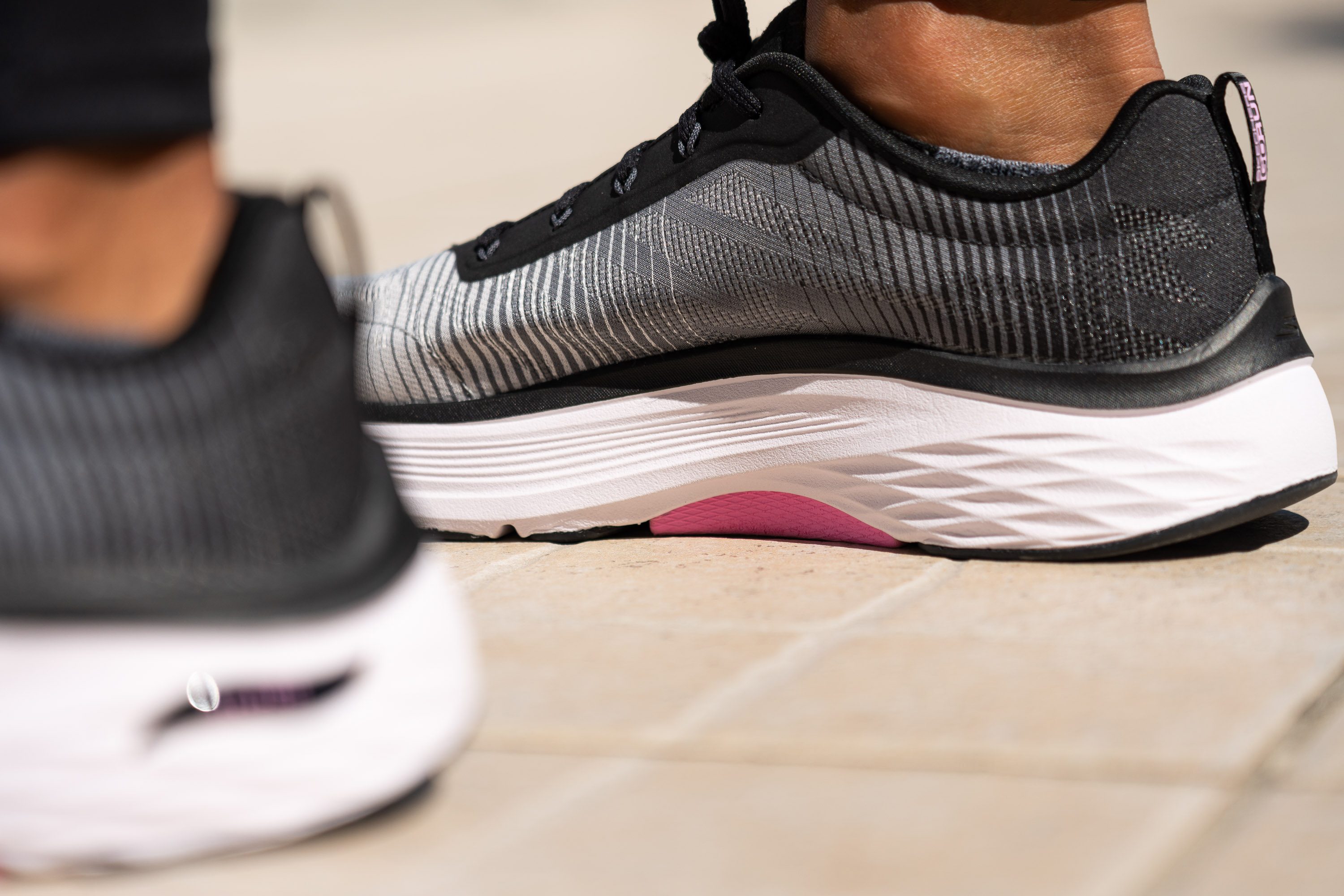
| Max Cushioning Arch Fit | Finger loop |

















































